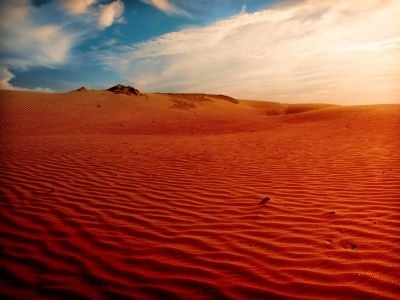Your support helps us to tell the story
From reproductive rights to climate change to Big Tech, The Independent is on the ground when the story is developing. Whether it's investigating the financials of Elon Musk's pro-Trump PAC or producing our latest documentary, 'The A Word', which shines a light on the American women fighting for reproductive rights, we know how important it is to parse out the facts from the messaging.
At such a critical moment in US history, we need reporters on the ground. Your donation allows us to keep sending journalists to speak to both sides of the story.
The Independent is trusted by Americans across the entire political spectrum. And unlike many other quality news outlets, we choose not to lock Americans out of our reporting and analysis with paywalls. We believe quality journalism should be available to everyone, paid for by those who can afford it.
Your support makes all the difference.Deserts keep growing around the world, but the process can be reversed if governments act in time, UN Secretary General Ban Ki-moon said Tuesday.
Speaking at the UN General Assembly meeting in New York, Ban sounded the alarm, saying that 40 percent of the world's land - home to about two billion people - is arid or semi-arid.
"Let us resolve today to reverse this trend," Ban said. "Contrary to common perception, not all dry lands are unproductive," he added. "Timely action on our part can unlock these riches and provide a solution."
Desertification is a relentless danger. More than 12 million hectares (29.6 million acres) are lost each year, which over a decade adds up to an area equivalent in size to the whole of South Africa, according to the UN Convention to Combat Desertification (UNCCD).
Sometimes that means sands blowing out from the Sahara or similar deserts. But in many cases desertification simply means the drying up of land to the point where it is no longer agriculturally productive.
However, Ban said the battle is far from hopeless.
"Success stories abound: from restoring ancient terraces in the Peruvian Andes, to planting trees, to hold back the incoming Saharan sands... There are examples from all continents of reversing desertification and improving the productivity of the land," he said.
Instead of being lost forever, current dry lands can be made to deliver "national economic growth and sustainable human development."
"We can break the links between poverty and desertification, drought and land degradation," Ban said.
With the global population projected to hit as much as nine billion by 2050, food production is an ever growing challenge, noted the current president of the UN General Assembly, Nassir Abdulaziz Al-Nasser.
"The economic, social and human cost of desertification is tremendous," he said.
According to the UNCCD, the current famine in the Horn of Africa is a sober reminder that the food crisis, which first became apparent with the food riots in 2007, still lingers in many corners of the world, and may manifest at any time.

Join our commenting forum
Join thought-provoking conversations, follow other Independent readers and see their replies
Comments